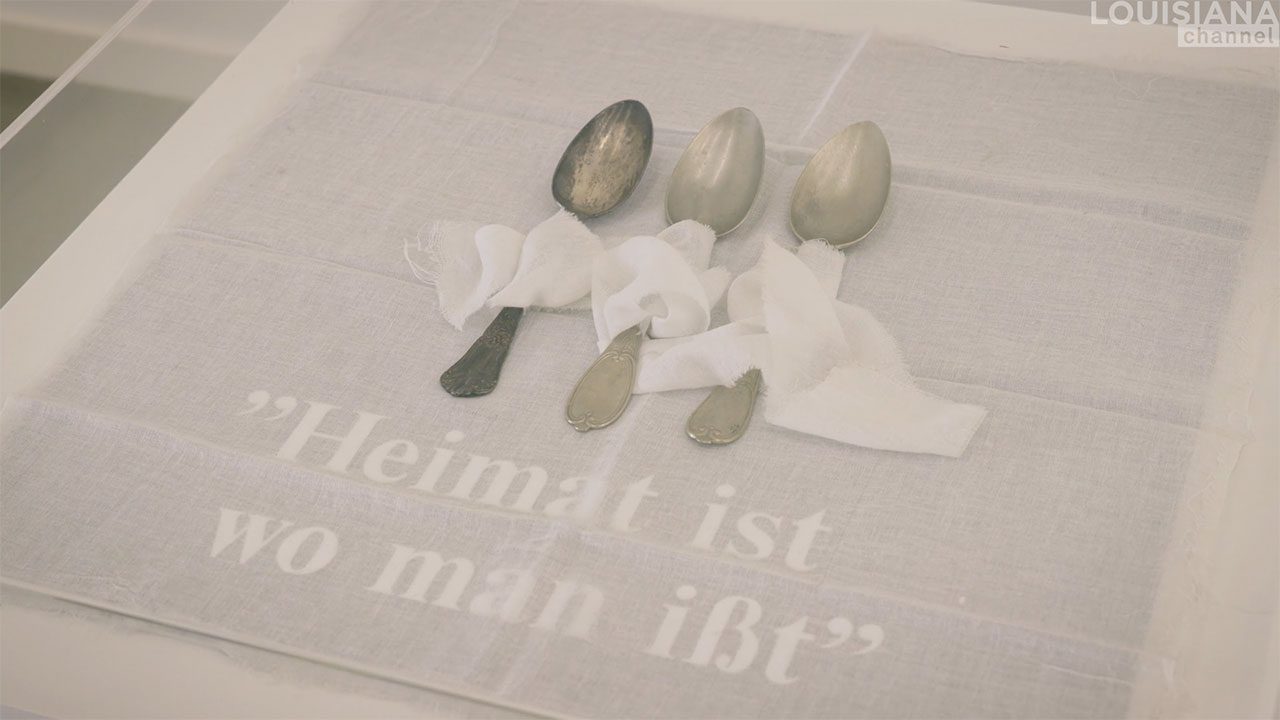VIDEO: Gülsün Karamustafa-Never Was Alone

“As artists, we were always out in the field, backing up the activities which were happening then.” Gülsün Karamustafa has spent decades exploring themes of memory, migration, and resistance. From her early years as an art student in a politically charged Turkey to her work spanning painting, installation, and film, her practice is deeply rooted in her own lived experience.
“I may call myself from the generation of ’68,” she says. “The world was in turmoil, and that was a time with all the young people willing to change the world.” As a student, she witnessed the political unrest shaping Turkey in the 60es and 70es, and her early artistic expressions were closely tied to the activist movements she was part of. “As artists, we were always there, out in the field, backing up the activities which were happening then, producing as much as we could.”
Gülsün Karamustafa’s work does not fit neatly into a single medium or category. “I cannot put myself into categories like painter or installation artist or a video maker,” she explains. “I use all the mediums according to my wish, according to what I want to do or what I wish to create.”
Her career took a pivotal turn after being briefly imprisoned due to her political involvement. After her release, she was denied a passport for several years, restricting her movement and opportunities abroad. “After being detained for a short time, I came out with the idea of doing some paintings that would remind me later in life what I had been through.” Her experience in prison shaped Gülsün Karamustafa’s perspective on art as a keeper of memory. “Because I believe that, you know, art sometimes can keep memory.”
Migration and displacement have been central to Gülsün Karamustafa’s practice, particularly the movement of people from rural areas to urban centers. “This confrontation was so harsh that there had to be a passageway in between. And this passageway was very interesting for me because it was creating a hybrid culture for the new times.”
Her fascination with the complexities of cultural identity also extends to her engagement with Orientalist paintings. “Edward Said once said that the West only looks upon the Orient through fragments.” This idea led her to work with fragmented images, exposing the underlying male gaze and power structures in such representations. “I said to myself, why not look upon the Orientalist things in this way—by creating fragments? And when I started to create these fragments, there were so many things which I didn’t see as a whole.”
In her long career, Gülsün Karamustafa also ventured into filmmaking. She started as an art director for filmmaker Atıf Yılmaz and went on to directing a feature film together with writer Füruzan. The film, My Cinemas (1990), became a classic in Turkish cinema. However, the challenges of traditional film production led her to step away from the medium until digital video opened new possibilities in the 2000s.
Despite the deeply personal nature of her work, Gülsün Karamustafa sees it as inherently universal. “I believe it is very important because when I talk about myself, about the point that I’m living in and when I’m expressing myself in my works, I find common realities immediately.” This connection between personal and collective memory is at the heart of her practice. “I never was alone when I made one work and put it in life to be shown and to be shared.”
Gülsün Karamustafa (b. 1946, Turkey) is an artist known for her critical engagement with themes of migration, exile, and cultural identity. Her works span painting, installation, film, and video and have been shown internationally, including at the documenta, and the São Paulo Biennial. In 202,5 she represented Turkey at the Venice Art Biennale.
Gülsün Karamustafa was interviewed by Nanna Rebekka in connection with the exhibition Back to Future at Kunsthal 44Møen. Producer and editor: Nanna Rebekka, Cinematographer: Rasmus Quistgaard, Jarl Therkelsen Kaldan, Music: Leo Royale, Tomas Joseph Greenhalf, Jack Lake, Bea Parks (Abaco /Upright), Gabriel Brosteanu Library Of The Human Soul/ Upright), Richard Dutnall (9 Lives Music / Upright), C. S. Sørensen, Frederik Thybo, Goodluck Casper Bach Hegstrup (StereoRoyal / Upright), Aaron Jackson, Francois Perez (Altitude Music / Upright), Jerome Silsby (The Music Supervisors / Upright)
© Louisiana Channel, Louisiana Museum of Modern Art, 2025. Louisiana Channel is supported by Den A.P. Møllerske Støttefond, Ny Carlsbergfondet, and C.L. Davids Fond og Samling
